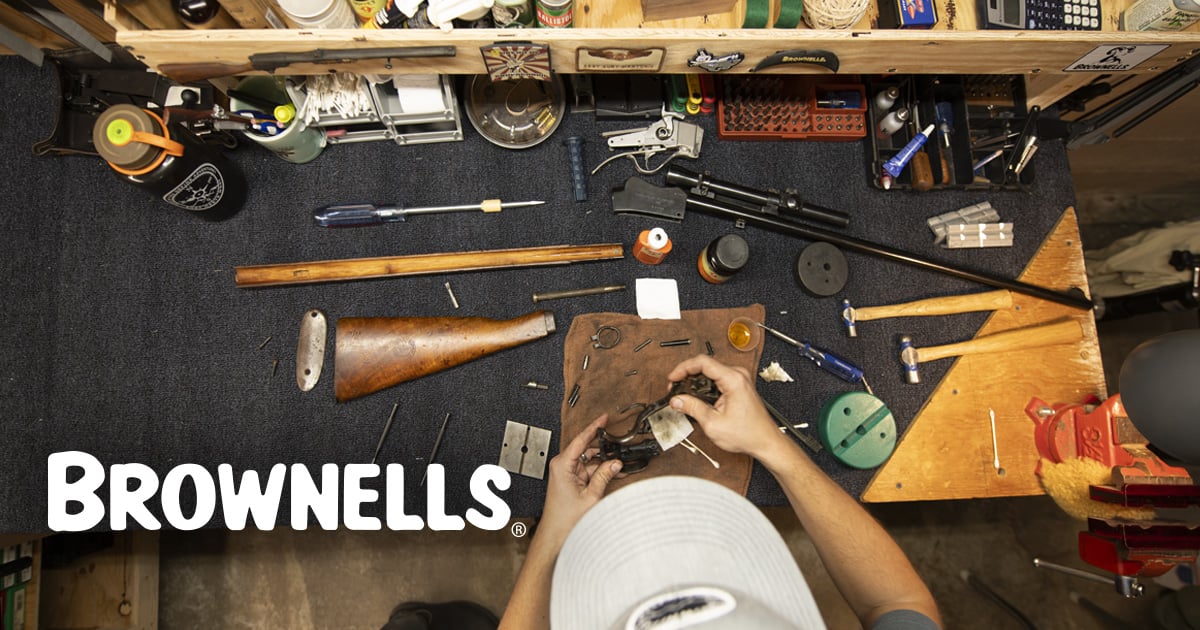Brownells heads out to Big Springs Shooting Complex to break down the 36-yard zero for your rifle. They compare it to other common zero distances, show you how to set it up step-by-step, and explain why the 36-yard zero offers a flatter trajectory ideal for practical shooting, competition, and general-purpose AR-15 setups.
What You Will Learn
Viewers will learn the differences between 25, 36, 50, and 100-yard zeros, and why the 36-yard zero keeps shots closer to point of aim out to 250 yards. They’ll also see how to bore sight, adjust, and confirm their zero efficiently.
Benefit
The benefit to watching is gaining confidence in setting up a versatile zero that reduces holdover guesswork and maximizes your rifle’s effectiveness at varying distances.

 www.brownells.com
www.brownells.com


Overview
Why 36 Yards Might Be Your AR-15's Sweet Spot: The 36-yard zero is gaining popularity among AR-15 shooters because it offers several advantages for certain applications, particularly when using iron sights or red dot optics.
Here's why it could be your AR's sweet spot:
1. Flatter Trajectory:
Important Considerations:
What You Will Learn
Viewers will learn the differences between 25, 36, 50, and 100-yard zeros, and why the 36-yard zero keeps shots closer to point of aim out to 250 yards. They’ll also see how to bore sight, adjust, and confirm their zero efficiently.
Benefit
The benefit to watching is gaining confidence in setting up a versatile zero that reduces holdover guesswork and maximizes your rifle’s effectiveness at varying distances.

Quick Tip: 36yd Zero for the AR-15
Hey, it's Caleb and Jude from Brownells. We’re out at Big Springs Shooting Complex to walk you through the 36-yard zero—what it is, why it works, and how to set it up on your rifle.
Overview
Why 36 Yards Might Be Your AR-15's Sweet Spot: The 36-yard zero is gaining popularity among AR-15 shooters because it offers several advantages for certain applications, particularly when using iron sights or red dot optics.
Here's why it could be your AR's sweet spot:
1. Flatter Trajectory:
- Compared to other common zero distances like 25 yards, the 36-yard zero provides a flatter trajectory, particularly out to 250 yards. This means your bullet's point of impact (POI) remains closer to your point of aim (POA) across a wider range of distances, minimizing the need for holdovers or hold-unders.
- With a 36-yard zero, you can expect a reliable impact zone out to 250 yards with minimal variation.
- The flatter trajectory of the 36-yard zero leads to smaller holdovers/hold-unders when shooting at different ranges.
- This simplifies aiming and makes it easier to engage targets at unknown distances, as you don't need to make significant adjustments to compensate for bullet drop or rise.
- The 36-yard zero is well-suited for competition shooting and practical rifle applications where quick target acquisition and accurate shots at various distances are essential.
- Its ability to keep the POI close to the POA across a useful range makes it a versatile choice for different shooting scenarios.
- Zeroing at 36 yards, as a near zero, makes it easier to confirm and refine your zero for a desired far zero.
- While some argue for zeroing at the far zero, starting at a shorter range like 36 yards is a practical way to get on target and ensure accuracy at longer distances.
Important Considerations:
- Ammunition Choice: The ballistic characteristics of your chosen ammunition (e.g., grain weight, muzzle velocity) will affect the bullet's trajectory, so it's crucial to consider this when selecting a zero distance.
- Barrel Length: The length of your AR's barrel also impacts trajectory.
- Intended Use: Ultimately, the "best" zero distance depends on your specific shooting needs and preferences.
